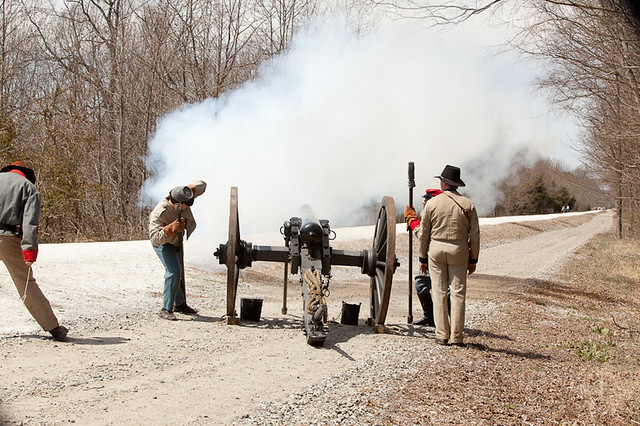Read Our Blogs
The Burning of High Bridge
Railroads were crucial infrastructure during the American Civil War as a means to transport supplies and troops. It's no surprise then that High Bridge was a strategic resource for the Confederacy.
High Bridge was a strategic resource for the Confederacy and worth fighting over
In 1862, the Confederate Government recognized the importance of High Bridge and ordered the construction of four redoubt forts to protect it. After the Battle of Sailor's Creek on April 6, 1865, Confederate forces were divided.
Generals Robert E. Lee and James Longstreet went to Farmville on the south side of the Appomattox River. There, Lee’s army received the first food rations since leaving Petersburg four days prior; they then crossed the river into Cumberland County.
Generals John B. Gordon and William Mahone, commanding the rear guard, took their forces across the Appomattox River at High Bridge on the night of April 6, 1865.
Following the Confederate Cavalry victory near High Bridge the day before, the Confederate strategy became to use the river as a barrier to stop the Union Army. Colonel T.M.R. Talcott ordered the First Regiment Engineers to destroy High Bridge and a smaller secondary wagon bridge. The First Regiment assembled combustible material under High Bridge at the first abutment on the western (Cumberland) side and on the wagon bridge. At approximately 7 a.m. on April 7, 1865, the Engineers lit the piles of flammable material. The western end of High Bridge took fire readily as the wooden superstructure was coated with pitch tar as a preservative. The wagon bridge, however, did not burn as easily; high water levels had soaked the wagon bridge and prevented the Confederates from burning it easily.
Union Army skirmishers from the Federal II Corps confronted the Confederate Engineers trying to destroy the wagon bridge and engaged them in combat. Confederate Col. Talcott ordered a counterattack to retake the wagon bridge and complete their mission to destroy it, but the Union responded with heavy artillery fire and forced the Confederates to retreat.
Union engineers successfully then turned their attention to the still burning High Bridge and put the fire out at the fourth abutment to save the rest of the bridge from burning. The fighting here and Union's successful capture of the wagon bridge unraveled Lee’s plan to use the river as a barrier between the two armies.
The Bridge as it is today in Central Virginia, a local gem and popular rail-trail
The iron trestles of High Bridge
After the American Civil War ended, Federal Engineers began construction of temporary spans to replace those that were destroyed. In July of 1865, the South Side Rail Road’s charter was restored and they continued repairing High Bridge. On September 22, 1865, through traffic resumed.
You can explore the area under the bridge - High Bridge substructure
For directions and more information about the park, click here.
If you have read the article and have a question, please email nancy.heltman@dcr.virginia.gov.
Search for blogs
By Park
Categories
Cabins
Camping
Fishing
History and Culture
Other
Programs and Events
Trails
Volunteers
Water Fun
Archive
2025
2024
2023
2022
2021
2020
2019
2018
2017
2016
2015
2014
2012

















